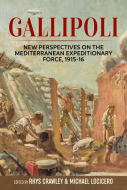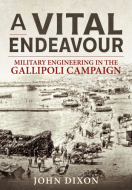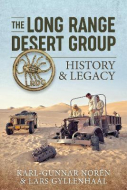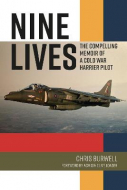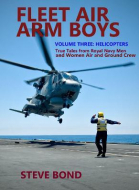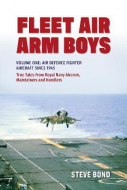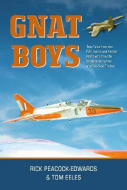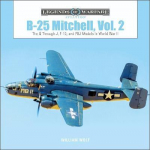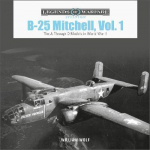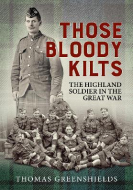
- Agriculture
- Architecture & Design
- Arts & Photography
- Biography
- Business
- Calendars and Diaries
- Childrens (All)
- Childrens (Illustrated)
- Childrens (Picture flats)
- Childrens (Te Reo)
- Classics
- Cooking, Food & Drink
- Craft & Hobbies
- Design (Art / Graphics)
- Design (Interiors)
- Education
- Fashion
- Fiction & Literature
- Fiction - Young Adult
- Gift Ideas
- Health & Wellbeing
- History
- Home & Garden
- Humour & Gift
- Instead of a Card Poems
- Military
- Music
- New Zealand
- NZ (History)
- NZ (Landscapes)
- NZ (Pictorial)
- Poetry
- Reference
- Religion & Faith
- Science & Nature
- Sport & Recreation
- Stationery
- Taschen : 40th Anniversary Edition
- Taschen : BA Basic Art
- Taschen : BU Bibliotheca Universalis
- Te Reo Māori
- Transport
- Travel
Military (455)
|
Gallipoli : New Perspectives on the Mediterranean Expeditionary Force 1915-16
ISBN: 9781911512189 Authors: Rhys Crawley, Michael Locicero Publisher: Helion & Company Generally conceded to be doomed from the outset by the most recent historiography, the Gallipoli campaign still arouses heated controversy. In a new compendium ... Generally conceded to be doomed from the outset by the most recent historiography, the Gallipoli campaign still arouses heated controversy. In a new compendium of original research by an impressive array of established and up and coming scholars, Gallipoli: The Mediterranean Expeditionary Force 1915-16 explores various aspects of the Allied military effort to force a passage through the Dardanelles Straits and eliminate Ottoman Turkey from its Central Powers alliance. Contributors and topics: Phylomena Badsey: Care Giving and Naval Nurses; John Bourne: 7th North Staffordshire Regiment; Stephen Chambers: MEF POWs; Alexandra Churchill: The Evacuation; Jeff Cleverly: Suvla Bay Landings; Rhys Crawley: Mediterranean Expeditionary Force Headquarters; Brian Curragh: Lieutenant-General Sir Bryan Mahon and 10th (Irish) Division; Peter Doyle: Gallipoli terrain; Katherine Swinfen Eady: 29th Division staff officer; Mel Hampton: First Battle of Krithia; Peter Hart: Royal Naval Division; Simon House: Corps Expeditionnaire d'Orient; Gavin Hughes: Irish Regiments; James Peter Hurst: ANZAC landing; Rob Langham: Highland Mountain Brigade; Michael LoCicero: Krithia Nullah operations November-December 1915; Linda Parker: British and Australian Chaplains; Ross Mahoney: British airpower; Simon Peaple: Grand Strategy; Chris Pugsley: New Zealand military performance; David Raw: Hunter-Weston-Egerton feud; Chris Roberts: Australian Brigade Command;; Rob Stevenson: 1st Australian Division; Tom Williams: Territorial divisions at Suvla Bay and Ritchie Wood & John Dixon: British and Australian Tunnellers. Bind: hardback Pages: 736 Dimensions: 170 x 240 mm |
$120.00DUE > 31st Jul 2022 |
|
|
A Vital Endeavour
ISBN: 9781911628897 Author: John Dixon Publisher: Helion & Company Whilst the Gallipoli Campaign has received considerable interest over the years, the work of the Royal Engineers during that campaign has been largely overlooke... Whilst the Gallipoli Campaign has received considerable interest over the years, the work of the Royal Engineers during that campaign has been largely overlooked. This book seeks to address this oversight to demonstrate the amount of engineering work required for a seaborne invasion. It was the engineers that provided the technical and professional back up for the rest of the Mediterranean Expeditionary Force and produced the know-how to keep the men in the front line supplied with all manner of necessities for their work. The Royal Engineers were working on the first day of the landings and were amongst the last to leave on the evacuation, and their story includes all the major engagement of the campaign. It also includes the sometimes difficult tasks of providing infrastructure to the peninsula handling all kinds of engineering works, from piers to land the stores, to roads and railways to distribute the equipment to the various parts of the line. A large part of their work on Gallipoli was the location and development of water supply across this dry peninsula. They dug wells, constructed reservoirs and provided miles of piping to connect both with watering points across the dry landscape. They were also responsible for all the land based signaling, with a number of signal companies established to ensure that messages were relayed with as little delay as possible. It was not long after the first exchanges that it was clear that some of the siege techniques of the Western Front would need to be employed and the Royal Engineers provided the expertise for the mining work that took the underground war to the Turkish army. It was not long thereafter that the Allied miners had a more or less complete mastery of the underground war. The demands of the front line fighting man meant that the Royal Engineers needed to rapidly become masters of their environment as they carried on their construction work throughout the campaign, and were ultimately to carry a large responsibility for providing the means to evacuate the soldiers and stores when an end to the campaign was called. The book looks at the structure of the Royal Engineers at the beginning of the Great War and the way in which in which they sat within the structure of the MEF and how their work was controlled at Brigade, Division and Corps level. This book is organized to show the work of the Royal Engineers, and the units of the Australian and New Zealand armies, at each stage of the campaign, putting their work in the context of the major offensives of the campaign. It also addresses briefly the work of the engineers on the nearby islands, such as Imbros, where GHQ was based, and Lemnos where engineers worked on everything from harbours to hospitals. Bind: paperback Pages: 452 Dimensions: 170 x 245 mm |
$90.00 |
|
|
The Long Range Desert Group : History and Legacy
ISBN: 9781915113061 Authors: Karl Gunnar Noren, Lars Gyllenhaal Publisher: Helion & Company The world's most respected special forces unit, the Special Air Service (SAS), was inspired by another irregular unit, the Long Range Desert Group (LRDG) or sim... The world's most respected special forces unit, the Special Air Service (SAS), was inspired by another irregular unit, the Long Range Desert Group (LRDG) or simply Ghost Patrol. You may now accompany the authors in Ghost Patrol vehicles far, far behind Rommel's lines. While doing so you will acquire insights into some extreme raids and reconnaissance missions. You will become familiar with tactics and inventions of the Ghost Patrol that are still relevant today. This book is also the story of an LRDG research expedition to modern Egypt undertaken in original WWII Jeeps and described as a "2300-mile Sahara epic" by Classic & Sports Car magazine. Original LRDG training notes and other tips for extreme travellers are included. Bind: paperback Pages: 160 Dimensions: 152 x 229 mm Publication Date: 28-02-2022 |
$55.00 |
|
|
Nine Lives
ISBN: 9781911667285 Author: Chris Burwell Publisher: Grub Street Chris Burwell charts one man's career in aviation from joining the RAF in 1969 aged 18, to having responsibility for training pilots for the world's major airli... Chris Burwell charts one man's career in aviation from joining the RAF in 1969 aged 18, to having responsibility for training pilots for the world's major airlines nearly 50 years later. After training at RAF Cranwell and RAF Valley and a tour as a flying instructor on Jet Provosts, he joined the Harrier Force, flying on front-line squadrons in the UK and Germany during the Cold War and as an instructor on the Harrier Conversion Unit. Detachments to Belize in 1977, the Falklands (twice), ejection from a Harrier GR3, introducing FLIR and NVG to the Harrier front line and operational missions in Northern Iraq are all covered in entertaining detail. After 30 years of service, the author spent 12 years with Cobham, managing their Teesside base and flying the Falcon 20 on operational training for the military and the King Air 200 on international flight calibration tasks. Finally, he spent four years in Spain with Flight Training Europe (FTE) Jerez with responsibility for the flying training of a new generation of pilots. Through his experience as a pilot, leader and manager gained over many years, his valuable insights into military and civilian flying operations are both engrossing and noteworthy. Highly recommended to readers of both disciplines. Bind: hardback Pages: 224 Dimensions: 156 x 234 mm Publication Date: 14-06-2022 |
$69.99 |
|
|
Fleet Air Arm Boys : Volume Three Helicopters
ISBN: 9781911667278 Author: Steve Bond Publisher: Grub Street Helicopters have been going to sea with the Royal Navy's Fleet Air Arm for over 70 years. Initially used for search and rescue (SAR) duties from aircraft carrie... Helicopters have been going to sea with the Royal Navy's Fleet Air Arm for over 70 years. Initially used for search and rescue (SAR) duties from aircraft carriers, the rapid development of both the helicopters and service experience resulted in them taking on the vital anti-submarine (and later anti-ship) attack roles. The 1956 Suez campaign saw the first operational use of Whirlwind helicopters for the insertion of troops by air into a battle zone, a capability which was expanded with more helicopters such as the Wessex, Sea King and today's Merlin. Through their vital role in the 1960s Indonesian Confrontation, the Commando helicopter force became universally referred to as the 'Junglies', by which name they are still known today. It is often said that if either of the 1982 Task Force aircraft carriers had been lost the Falklands War could not have been won. The same would surely have been true without helicopters. Their vital tasks, including inserting Special Forces behind enemy lines, protecting the Task Force from Exocet missile attack and recovering wounded troops whilst under enemy fire, are rightly hailed as being instrumental. At home, the essential SAR effort by both the Royal Navy and their RAF counterparts has resulted in incredible stories of saving lives against the odds. Royal Navy destroyers and frigates have also long since benefitted from having their own helicopter Flight aboard. Frequently operating in extremes of weather, flying a Wasp, Lynx or today's Wildcat from and back to a heaving deck is every bit as risky as flying fixed-wing aircraft off the carriers of old using the cat and trap system. Once dismissed as a novelty, the helicopter has more than proved itself. Indeed, for ten years until the arrival of the Queen Elizabeth-class aircraft carriers, the Fleet Air Arm's operational force was entirely rotary-wing. Today's Merlins and Wildcats, with their dedicated aircrew, maintenance and support staff continue to demonstrate just how vital an asset the helicopter has become. Here are the words of the men and women themselves, skilfully brought to life by Steve Bond and profusely illustrated in colour and b/w. Bind: hardback Pages: 288 Dimensions: 156 x 234 mm Publication Date: 31-07-2022 |
$69.99 |
|
|
Fleet Air Arm Boys : Volume 1 Air Defence Fighter (pb)
ISBN: 9781911667315 Author: Steve Bond Publisher: Grub Street The RAF's continuing role in the projection of air power in the defence of the United Kingdom and its overseas interests since the end of the Second World War i... The RAF's continuing role in the projection of air power in the defence of the United Kingdom and its overseas interests since the end of the Second World War is well known. However, the same cannot always be said about the Royal Navy's Fleet Air Arm (FAA), in part due to the ten-year gap between the retirement of the Harrier and the arrival of the F-35B and the Queen Elizabeth-class aircraft carriers. Flying high performance aircraft off a carrier demands not only a high level of skill, but also a considerable amount of courage and determination, not least to land back on a very small piece of real estate bobbing about in a rough sea, often at night, with no possibility of diversion. The nature of these operations has meant that the accident rate and aircrew losses were very high - and accepted as part of the job. With the arrival of the Queen Elizabeth and the Prince of Wales, it is time to redress the balance and bring the FAA's extraordinary story to the audience it so richly deserves through the words of those air and ground crews who have been part of it since 1945. What emerges is an amazing close-knit esprit de corps, often accompanied by a long-standing and still simmering rivalry between the RAF and the Royal Navy over who should project air power overseas. Enormous respect is shown by the aviators and ships' senior officers for the aircraft handlers and maintainers, who work long hours in a highly dangerous environment on the flight deck. This first volume looks chronologically at every aircraft type flown in an air defence role since 1945. Involvement in conflicts including Korea, Suez, the Falklands, Bosnia and elsewhere is included, and perforce the cost in human lives, even in everyday operations, frequently emerges. Balancing this are the everyday grind, the good times, the humour, the 'runs ashore' and the sense of pride in a job well done. All delivered in the words of the men themselves. Bind: paperback Pages: 288 Dimensions: 156 x 234 mm Publication Date: 31-07-2022 |
$55.00 |
|
|
Gnat Boys
ISBN: 9781911667261 Authors: Air Commodore Rick Peacock-Edwards, Tom Eeles Publisher: Grub Street The Folland Gnat was used by the RAF mainly in the advanced training role, in the 1960s and 70s, where it proved to be an ideal lead-in trainer for high perform... The Folland Gnat was used by the RAF mainly in the advanced training role, in the 1960s and 70s, where it proved to be an ideal lead-in trainer for high performance aircraft such as the iconic Lightning, the first RAF supersonic fighter. It was also the aircraft used by the famous 'Yellow Jacks' formation aerobatic team, formed in 1964, the forerunner of the world famous 'Red Arrows' team which was equipped with the Gnat for over a decade before being replaced by the Hawk in 1980. Lesser known, the Gnat was also used as a lightweight fighter by both the Indian and Finnish air forces. In the case of India, the Gnat, later called the 'Ajeet' (Midge), saw combat experience in the Indo-Pakistani War. Today, over 60 years since the aircraft first flew, several Gnats continue to be operated from North Weald in Essex by the Heritage Aircraft Trust. Their Gnat Display Team are seen at many air displays throughout the UK. Gnat Boys relates the history of the aircraft and includes many fascinating and untold stories told by those who flew the aircraft, many of them well-known and distinguished aviators. The book also includes chapters on both the operations and experiences of those who flew the aircraft in the Indian and Finnish air forces. There are many fascinating and exciting tales and to bring readers fully up to date the book also covers accounts of those who fly the aircraft in the 2020s with the Gnat Heritage Flight. Gnat Boys is set to become one of the most sought-after books about aviation covering a very special era in aviation history, a must read for everyone with an interest in stories of human trial and endeavour. Bind: hardback Pages: 256 Dimensions: 156 x 234 mm Publication Date: 31-07-2022 |
$69.99 $10.00 |
|
|
B-25 Mitchell Vol 2
ISBN: 9780764363429 Author: William Wolf Publisher: Schiffer Books This second of two volumes on the North American B-25 Mitchell covers the late-WWII G through J, F-10, and PBJ variants of the famed US medium bomber. Among the... This second of two volumes on the North American B-25 Mitchell covers the late-WWII G through J, F-10, and PBJ variants of the famed US medium bomber. Among the many topics discussed are the Mitchell versions used by the US Navy and Marine Corps, as well as photo-recon and experimental types. B-25s in foreign wartime service are also shown, included those used in Poland, France, England, and Soviet Russia. A detailed chapter covers all types of armament used in the Mitchell, from guns and cannon of various calibers to ammunition used, including machine gun rounds, rockets, and bombs. A special section of the book features discussions on unique B-25 missions, events, and aircrew during WWII and in the postwar era, such as the April 1942 Doolittle Raid, and the B-25 collision with the Empire State Building in July 1945. B-25 appearances in classic feature films such as Thirty Seconds over Tokyo and Catch-22 are also detailed. Bind: hardback Pages: 112 Dimensions: 229 x 229 mm Publication Date: 28-07-2022 |
$45.00 |
|
|
B-25 Mitchell Vol 1
ISBN: 9780764363412 Author: William Wolf Publisher: Schiffer Books The North American B-25 Mitchell is WWIIs most heralded and versatile medium bomber. Volume 1 (of two) gives the reader a concise illustrated look at the A thro... The North American B-25 Mitchell is WWIIs most heralded and versatile medium bomber. Volume 1 (of two) gives the reader a concise illustrated look at the A through D models and follows the bombers genesis from the formation of the North American Company and its early steps toward the development of the NA-40, the first B-25. The continued evolution of the Mitchell from the A, B, C, and finally to the iconic D models is described in vintage photos. The production at the parent Inglewood, California, plant and then the Kansas City plant is illustrated, as are the important modification centres. The last half of the book covers the D model in many colour photos of the interior and exterior, from nose to tail and from wingtip to wingtip. The Wright R-2600 radial engine and Hamilton-Standard propeller are detailed, as are their associated systems. The Mitchells markings and insignia changes are featured throughout. Bind: hardback Pages: 112 Dimensions: 229 x 229 mm Publication Date: 28-06-2022 |
$45.00 |
|
|
Those Bloody Kilts
ISBN: 9781915113085 Author: Thomas Greenshields Publisher: Helion & Company The book is the first to examine comprehensively the experience of the Highland soldier in the Great War, seeking the truth behind the myths. It does not deal w... The book is the first to examine comprehensively the experience of the Highland soldier in the Great War, seeking the truth behind the myths. It does not deal with the operational history, but with the life and character of the Highland soldier. It involves a far more comprehensive search of the original sources than previously attempted, being based on the original letters, diaries and accounts of serving soldiers and officers, principally from the Imperial War Museum, the Liddle Collection, the National Library of Scotland and the Regimental Museums, which together provide great richness of personal detail. Much work on Highland soldiers, and almost all popular work, has perpetuated myths about their unique character and martial spirit. This book critically examines such mythology and offers new insights into the practicality of the kilt, the use of the pipes, identity and morale, and frank revelations about courage, nerves, shell-shock and failure and the ruthless use of the bayonet. The whole is evidence based and scholastically sound, but nevertheless thoroughly readable and accessible to the general reader. The book reviews the Highland regiments before the declaration of war in 1914, including the kilted regiments not only of Scotland, but of England and the Empire. This includes an examination of their nature, composition, recent battle experience in South Africa and the Empire, sense of identity, public image and reputation. It then reviews the Highland battalions which actually went to war, including not only the pre-war Regular and Territorial battalions, but also the additional Territorial, Service, Garrison and Reserve battalions raised in the United Kingdom, together with the battalions raised for war service in Canada and South Africa. Specifically, it examines their composition, including Gaelic speakers, non-Highland Scots, recruits from the other home countries, including England, from the Empire and from foreign countries. It examines how composition varied between Regular, Territorial and Kitchener battalions etc, and how it changed with huge losses, replacement drafts and the introduction of conscription. It further examines the background of both officers and men and the reasons why they specifically joined Highland regiments. The book briefly describes the evolution of the Highland uniform during the war. More particularly, it examines the experience of the Highland soldier wearing the kilt, including its attraction for recruits, their first introduction to the kilt, regulations, custom and tradition for wearing the kilt, delays in issuing the kilt, the issue of khaki kilts, opinions of the kilt, self-image, pride and identity. It also considers its attractiveness to the ladies, the French and others, and the practicalities, risks and challenges of wearing it at home and behind the lines. It goes on to consider the practicality of the kilt at war, including exposure to cold, wet and mud, and the problems of lice, mosquitoes, barbed wire, easy recognition and mustard gas. It also considers attempts to alleviate these difficulties, for example through the temporary issue of trousers, or through proposals for abolishing the kilt in the trenches. In addition, it investigates soldiers' opinions of the kilt at war. One chapter considers how the pipes were actually used in training, in battle and behind the lines. It demonstrates how, while on occasion the pipes were still used to pipe troops into battle, increasingly they were held back from the battle itself and used principally to boost morale behind the lines. It also investigates what the soldiers actually thought of the pipes, and the ways in which they contributed to morale, including both the reinforcement of identity and the emotional and stirring impact of the music itself. The book examines the way that discipline and inter-personal relations actually worked in the Highland battalions. It examines the exercise of discipline, and the relationships between officers, N.C.O.'s and men to see if there is any evidence at all for a more informal style of discipline and a distinctive 'family character' in the Highland battalions, as frequently claimed. It also examines the personal relationships between the men, formed amongst small units (sections), groups of pals and between particular pals, identifying the support mechanisms used to maintain morale in the face of adversity. It relates these 'low level' support mechanisms to support from home, the hierarchical relationships discussed above, and the overarching support provided by the battalion and regiment, to build a model of the way in which mutually reinforcing support mechanisms contributed to the maintenance of morale. It also considers identity and self-image, including identity as Highland soldiers, as members of individual regiments and battalions, and as Scots, and relates these elements to a model of the way morale worked. It includes a consideration of the extent to which specific customs and traditions were observed in the Highland battalions. The book considers the behavior of the Highland soldier in battle, looking at their reputation for ferocity, the cult of the bayonet, their attitude towards the Germans, the taking or otherwise of prisoners and evidence for their treatment. It also looks at their reputation for courage, considering examples of courage alongside other examples of nerves, shell-shock and, on occasion, failure. The final chapter brings together the strands discussed in the preceding chapters, and seeks to identify what, if anything, truly made the Highland soldier unique, and to what extent his experience was simply the same as that of the ordinary Tommy. Bind: paperback Pages: 536 Dimensions: 171 x 248 mm Publication Date: 15-04-2022 |
$79.99 |


